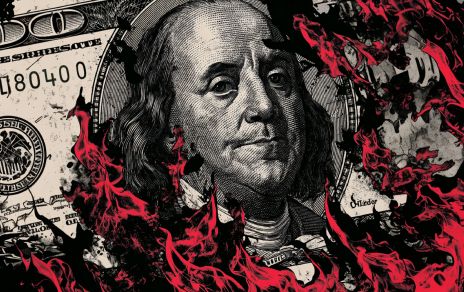Amid the current geopolitical turmoil — especially the never-ending conflicts in the Middle East and Eastern Europe — and renewed hopes for rate cuts from the Fed, one of the most pressing concerns right now is the rapid growth of the U.S. national debt. It recently surpassed $37 trillion.
Just for context, in January 2020, the Congressional Budget Office (CBO) estimated that the gross federal debt would not exceed $37 trillion until after fiscal year 2030. Thus, the U.S. is 5 years ahead of schedule. What's worse, the nation's debt is estimated to exceed $52 trillion by the end of FY 2035, thanks in part to Trump.
Although he promised to solve the debt problem during his presidential campaign, by giving the green light to the so-called “Big Beautiful Bill,” he automatically added almost $3.4 trillion more in deficit spending over the next decade. Unless gold falls from the sky, it will be financed by issuing new debt over and over again.
If only that money were used to improve infrastructure and help boost the S&P 500 and Dow Jones indices — but that’s not the case. A big part of the deficit could come from extending the tax cuts first introduced in 2017 during Trump’s first term. On top of that, defense spending will increase by billions of dollars.
Now imagine a company that borrows to pay dividends to its major shareholders and spends more on security, while neglecting to invest in R&D or maintain its factories. No investor would find that sustainable. That's the risk some investors are beginning to see in U.S. debt, though for now, most are analysts.
According to the latter, investors may start demanding higher yields to keep buying Treasuries. In that sense, it is unlikely to change the outlook for government bond prices if the Fed returns to an easing cycle — something Trump has been pushing for since his return to the White House, even if it puts pressure on the dollar index.
Could China be the first domino to fall?
According to U.S. Treasury data, Beijing has been cutting its holdings of U.S. debt for three consecutive months. By June, its portfolio had dropped to $756 billion — the lowest level since 2009. Some viewed this as a response to growing concerns about the sustainability of U.S. debt. Still, there’s no reason to sound the alarm just yet.
While China has been trimming its exposure, total foreign holdings of U.S. Treasuries actually climbed to a record $9.13 trillion in June, up from $9.05 trillion in May. Compared to a year earlier, foreign ownership has risen by nearly $1 trillion, or about 10%. So, there’s no sign of panic — for now.

